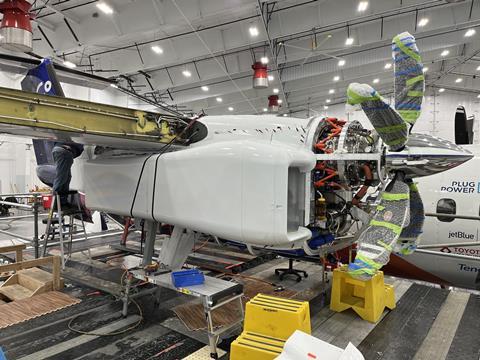The rush to reduce aviation’s emissions has created a tsunami of sustainable aircraft concepts, as many as 700 by some estimates.
Now, there are growing signs of rationalisation, as investors focus on inventions with prospects of strong, early returns, while many e-aviation aspirants struggle to meet high costs and long timelines for certification.

“There are plenty of concepts out there. There’s also a lot of hype,” said Patrick Edmond, managing director of aviation consultancy Altair Advisory.
“The discourse for a lot of players at the moment is just finding the finance to get to the starting line. Then there’s certification, and questions like ‘What happens when the gear doesn’t come down, and you have to land on a belly full of lithium batteries?’ I think we’re getting very close to a shakeout starting.”
There’s ample scope for innovation, said one financier. “But not 700 models worth. A lot of people are in the market looking to bring in new designs, and invariably, it takes longer and costs more than you think. Not all of them can survive.”
Some programmes are several years advanced and well on the road towards certification, with solid investor backing to evolve their products, and orders flowing in.
A mix of all-electric, hybrid-electric and hydrogen-electric testbeds have been flown by pioneers including Ampaire, Eviation, Pipistrel, VoltAero, ZeroAvia, Canada’s Harbour Air, and a host of air taxi developers.
More are readying for takeoff, among them Universal Hydrogen, which delivers capsules of fuel directly onto the planes they will power, bypassing conventional fuelling infrastructure, and Cranfield Aerospace with a hydrogen-powered derivative of the iconic Britten Norman Islander.
David Doral is managing director of Euro-Australian company Dovetail Aviation, which is designing and building battery-electric and hydrogen-electric powertrains to convert existing aircraft.
Partnered with investors including Australia’s Rex Aviation and European operators Air Nostrum and Volotea, and supported by an Australian Government grant, Dovetail is focused on retrofitting, not just because of lower cost, but also a faster, simpler path to certification than all-new models.
Dovetail is preparing its first fully-electric powertrain, and plans to fly a converted Cessna Caravan next year, targeting 2025 certification.
“Getting to market can cost hundreds of millions of dollars, even billions,” says Doral. “A couple of years ago there was greater appetite for risk from investors. But now that appetite has changed significantly.”
Global lessor Avolon has invested in UK start-up Vertical Aerospace, and announced orders for 500 of its VX-4 electric air taxis, now all committed to customers, mainly major airlines.
“We identified Vertical as the right partner to start our exploration of the potential for electric air travel,” say Marc Tembleque Vilalta, head of Avolon-e. “The best way for us to help the business scale up from a concept to a full production OEM was to get involved as a shareholder.
“Near term, we see funding availability as the limiting factor for most new technology OEMs this year. Cash conservation may see the timelines of some of the concepts pushed out while access to capital remains limited,” he says. ”This will also provide existing players with acquisition opportunities to add valuable IP and technology.”
John Thomas is chief executive of Connect Airlines, a US short-haul start-up preparing to launch. Connect has ordered up to 100 conversion kits from Universal Hydrogen, in which it has also invested, to switch ATR 72 turboprops to zero carbon emission powertrains.
The formula for success was clear, he says: “Technology, lower execution risk, and commercial viability.” But is 2023 a year of shakeout for concept aircraft and powertrains?
“I think we have a few more years,” he replies. “The size of the prize is so large that people will continue to fund, even if some are late to market.”























